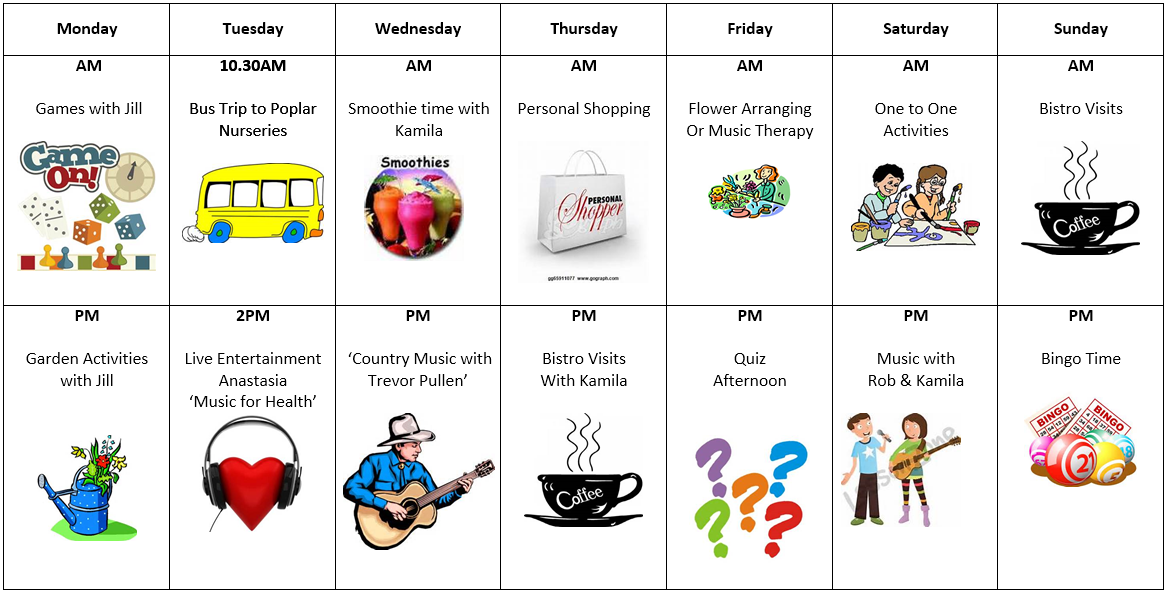Increased activity and engagement with others has been proven to have a positive impact on the quality of life of elderly people and even contribute to increasing mortality rates. Research also shows that inactivity and low levels of engagement can lead to the loss of physical function, social isolation, behavioural symptoms and poor quality of life.
The first statement in the NICE (National Institute for Health and Care Excellence) quality standard calls for care home residents to be offered opportunities during their day to participate in a meaningful activity. This statement was put forward to promote residents’ health and mental well-being. NICE states, “it is important that older people in care homes have the opportunity to take part in social and learning activities, including activities of daily living. This will help to ensure that activity is meaningful and that relationships are developed and maintained.” The benefits of creativity and activities in care settings have recently been highlighted in a Gateshead care home’s ‘Outstanding’ report by the Care Quality Commission. The manager at Shadon House, Joanne Mathewson, said: “We have worked hand in hand with Equal Arts for the past five years and we understand and actively support meaningful activities for people who use our service.”
It is vital for your care home to encourage socialising and group activities as much as possible. One way of ensuring your staff and residents are organised and plan sufficient activities is through creating a senior activity board.
What are the benefits of creating an activity board?
An activity board is simply an attractive calendar that displays the planned activities for the week ahead. It is efficient to create an undercurrent of routine, so your residents can feel like they are part of a community and stable routine. For example, you could plan to hold an arts and crafts morning every Monday, outdoor activities every Tuesday, a music afternoon every Wednesday and Thursday, a pub social on Fridays and a trip into the community on the weekends. Creating a senior activity board for your care home can present a clear visible agenda of activities that encourage participation. With the addition of an activity board, you can keep everyone in your home informed about your activities week by week. Activity boards serve as an eye-catching way to keep everyone informed and provide an exciting plan for the week.
Here are some directions you should follow when creating an activity board:
> Clearly display the plans for the week, including a section for the morning, afternoon and evening of each day.
> Design the board so that it is highly visible and attractive for your residents. You could draw simple pictures of each activity and provide your residents with something to look forward to.
> Ensure you use a variety of bright colours and large letters for individuals with Dementia and Alzheimer’s in mind.
> Make sure the activities you include feature the opportunity for residents to socialise and enjoy mild competition.
Some popular forms of social and recreational activities in care homes that you could consider include the following:
> Cards, bingo and board games
> Dominoes
> Sing-a-longs and karaoke
> Seasonal parties including, Christmas and Easter party and summer fete
> Bingo evenings which are open to the local community, family and friends
> Other musical entertainment
> Films and video shows
> Book and newspapers
> Birthday celebrations
> Outings
> Hairdresser who attends the home every week
> Manicures
> Maintaining life-long hobbies e.g. puzzles

An example of an activity board that was used in St Mary’s Care Home in Essex
Care home workers should ensure they are familiar with the key points of each resident’s biography, interests and preferences. This will help them to understand whether it is appropriate to encourage individual residents to participate in particular activities. Discussing ideas with friends and relatives may be a good place to start.
It is important not to force residents into an activity or event, but to see them as individuals with their own preferences. Getting to know individuals and their interests can help when planning activities for your activity board. Ensure you identify any barriers, whether perceived or real, that may be preventing them from getting involved.